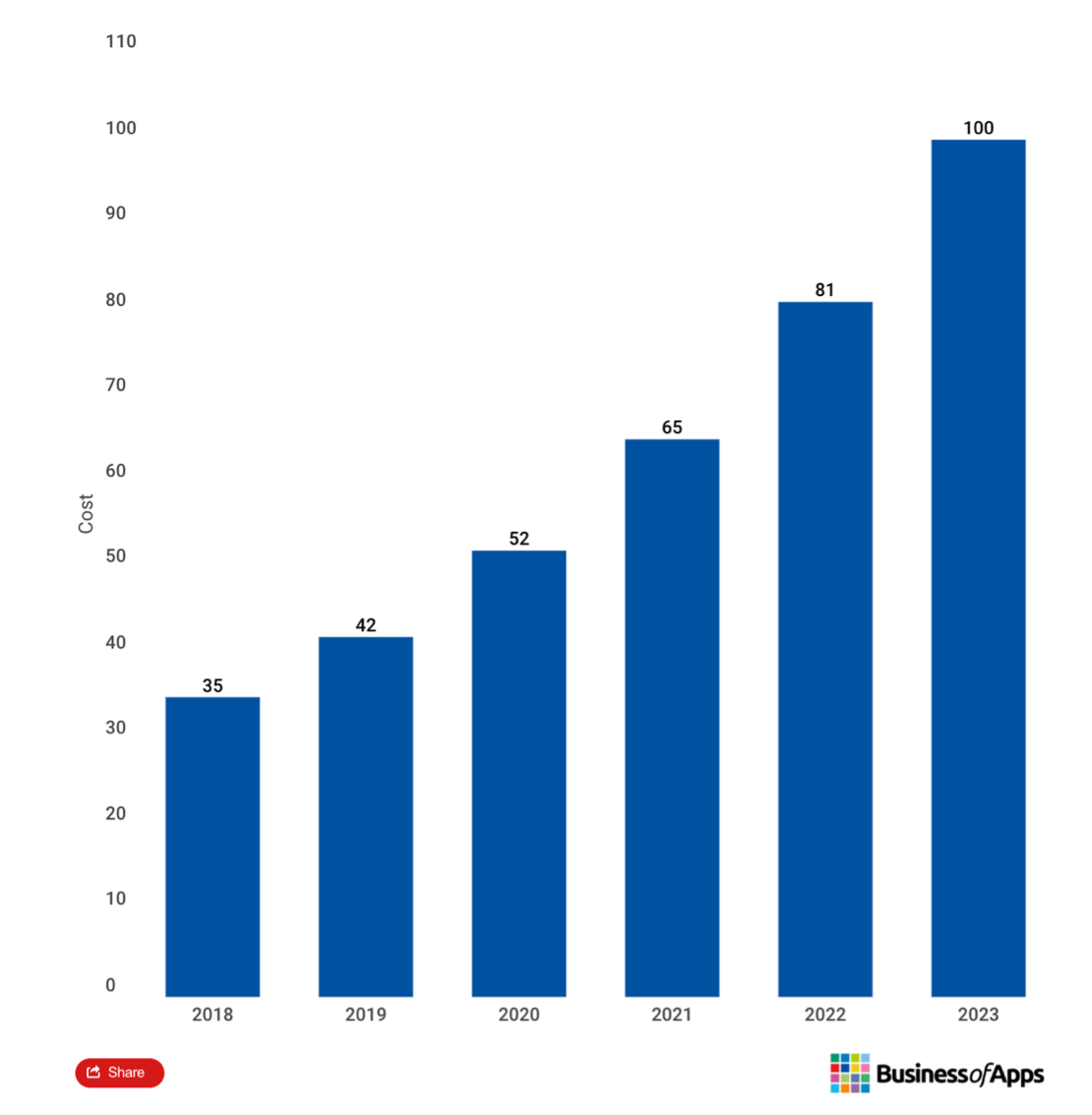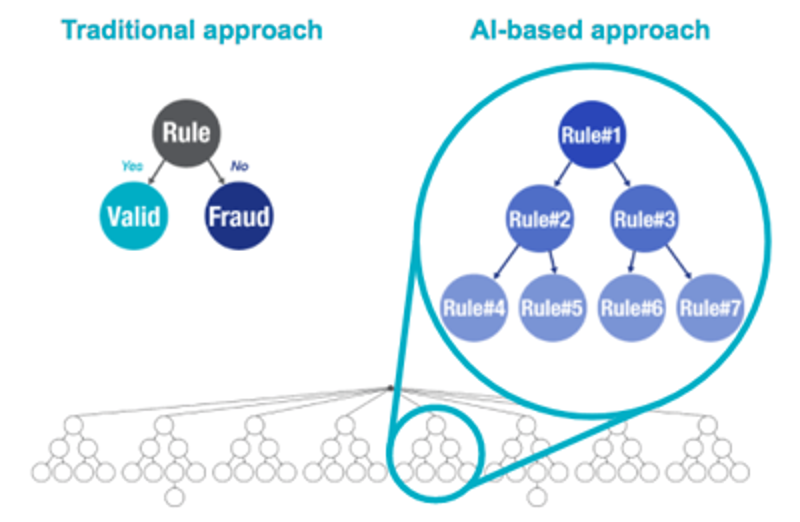Advertising Fraud Prevention/Detection using AI
By: Kadam Adalja, Rakuten India
What is Advertising Fraud?
Advertising fraud also known as Ad fraud is an attempt to deceive advertising platforms into thinking that fake activity on the network is real user behaviour for the purpose of financial gain. Malicious actors typically use bots in order to implement ad fraud, although there are a variety of other methods used to get advertisers and ad networks to pay them for fake activity including some that involve real humans.
Estimated Cost of Digital Advertising Fraud from 2018 to 2023.
As you can see in the below image, it is estimated that Ad fraud has been increased from 35 Billion $ to 100 Billion $ in 2023. It is expected to increase ad fraud to 180 billion $ in 2028. (courtesy: BusinessofApps)

How Advertisers are Generally Charged?
Advertisers are generally charged based on various pricing models that align with their campaign goals and the type of ad inventory they are purchasing. Here are the most common pricing models in digital advertising:
Cost Per Click (CPC):
Definition: Advertisers pay each time a user clicks on their ad.
Use Case: Commonly used in search engine advertising and display advertising where the goal is to drive traffic to a website.
Cost Per Mille (CPM):
Definition: Advertisers pay for every 1,000 impressions (views) of their ad.
Use Case: Often used in display advertising where the goal is to increase brand awareness.
Cost Per Acquisition (CPA):
Definition: Advertisers pay only when a specific action is completed, such as a sale, lead, or sign-up.
Use Case: Common in affiliate marketing and performance-based campaigns where the goal is to drive conversions.
Cost Per Lead (CPL):
Definition: Advertisers pay for each lead generated, such as a form submission or a sign-up.
Use Case: Used in campaigns focused on lead generation, particularly in B2B marketing.
Cost Per Install (CPI):
Definition: Advertisers pay for each app install generated from their ad.
Use Case: Common in mobile app advertising where the goal is to increase app downloads.
Cost Per View (CPV):
Definition: Advertisers pay for each view of their video ad.
Use Case: Used in video advertising platforms like YouTube, where the goal is to increase video views.
Flat Rate or Fixed Cost:
Definition: Advertisers pay a fixed amount for a specific placement or period.
Use Case: Often used for sponsorships, homepage takeovers, or other premium placements.
What are Some Common Types of Ad Fraud?
There are many different types of ad fraud, ranging from bots pretending to be humans, spamming ads with fake engagement, click farms, and more. Below are several of the most common types of ad fraud that marketers should be aware of.
Ad Impression Fraud
Ad impression fraud is a type of digital advertising fraud where fraudulent activities are conducted to generate fake ad impressions. An ad impression occurs each time an ad is fetched and displayed on a user's screen. Impression fraud manipulates this process to create the illusion that an ad has been viewed by a legitimate user, when in fact it has not. This type of fraud can significantly impact advertisers by inflating their costs and distorting performance metrics.
Ad Click Fraud
One of the most common types of ad fraud is click fraud, which is usually carried out by bots. Click fraud refers to bots targeting pay-per-click (PPC) ads in order to either waste the advertisers budget or to artificially boost the organic ranking of a webpage or social media post. The goal of these bots is to trick the ad platform into believing the activity is from real users, which in turn signals that the post or webpage is more popular than it really is.
Ad Conversion Fraud
Ad conversion fraud, also known as conversion fraud or CPA (Cost Per Acquisition) fraud, is a type of digital advertising fraud where fraudulent activities are conducted to generate fake conversions. Conversions refer to specific actions that advertisers want users to take, such as making a purchase, signing up for a newsletter, filling out a form, or downloading an app. Conversion fraud manipulates this process to create the illusion that these actions have been completed by legitimate users, when in fact they have not. This type of fraud can significantly impact advertisers by inflating their costs and distorting performance metrics.
AI Based Fraud Detection
As ad fraud attempts become more sophisticated and difficult to detect, so must our fraud detection mechanisms evolve in tandem and the only way that this can be achieved is using artificial intelligence (AI).
An AI-based ad fraud detection system actually starts with a rule-based approach as the base but through self-learning, builds layers of defence that learn from each suspicious activity that it detects. An AI-based model also has the advantage of being able to view patterns on many more dimensions than a traditional system.
Traditional rule-based models typically analyses activity on between one to three dimensions. An AI-based model analyses over 80 dimensions at a time, enabling it to detect extremely sophisticated ad fraud patterns. With self-learning, AI-based models can evolve as ad fraud patterns evolve to evade traditional systems.

Conclusion
In summary, the escalating cost and complexity of ad fraud necessitate advanced detection and prevention strategies. AI-based systems offer a promising solution by providing a more comprehensive and adaptive approach to identifying and mitigating fraudulent activities, thereby protecting advertisers' investments and ensuring the integrity of digital advertising metrics.
If you found this post on advertising fraud detection insightful, be sure to check out our other blog on Fraud detection in Fintech business

Kadam Adalja | RIEPL
August 20, 2024

